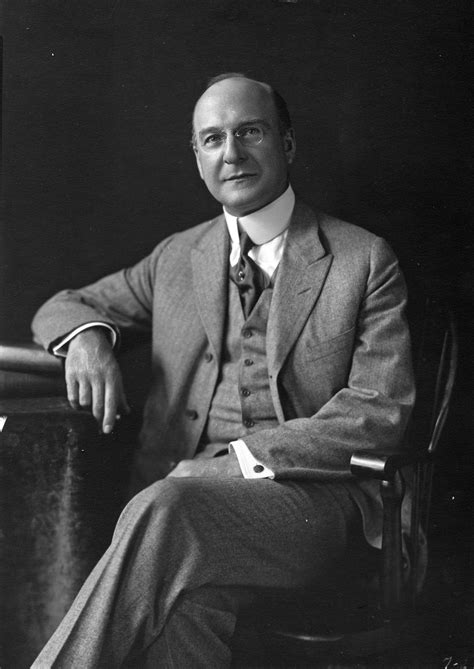For the Love of Plants
by Danny Summers
The Love of Plants can be a powerful thing. It's powerful in many ways. If you consider the simple relationship we humans have with plants... we breath oxygen they give off and they need the carbon dioxide we exhale. That's about as close as a relationship gets - the very definition of symbiotic.
While you might not consider that to be a form of love, how we see people interact with plants can truly be expressed as a form of love. And, they will certainly say how much they love to garden, how they love their flowers, trees, and plants and how they love how the activity of gardening or being around all these plants makes them feel.
A Man, a Hotel and a Garden. This attention-grabbing heading is certainly an unlikely combination but it is all connected, involves the love of plants and is all about where we are heading for The Fall Event 2021. I want to share with you just some of the story of Pierre S. du Pont and provide some links for more reading on your own. Whether you can be with us at The Fall Event 2021 or not, this is a wonderful example of "For the Love of Plants." Portions of the following text is collected from sites to be shared at the end of this article.
Pierre S. du Pont was born in 1870 in a DuPont Company house overlooking the Brandywine Creek just north of Wilmington, Delaware. His early years were influenced by the area’s natural beauty and by the du Pont family’s long tradition of gardening. But not even Pierre himself could have predicted that he would someday become one of the country’s most influential gardeners.
While he always preferred to live amid the quiet, familiar beauty of the Brandywine Valley, Pierre was greatly influenced by his frequent travels around the globe. He attended several world’s fairs and expositions, where he was astounded by grand architecture and the latest technology, including the huge display of water pumps at the 1876 Centennial Exposition in Philadelphia and illuminated fountains at the 1893 World's Columbian Exposition in Chicago.
While traveling, he was also exposed to a wide variety of garden settings, including Horticultural Hall at the 1876 Centennial, England's Sydenham Crystal Palace, the Royal Botanic Gardens at Kew and the flora of South America, the Caribbean, Florida, California and Hawaii. Visits to Italian villas and French châteaux focused on the architectural qualities and water effects of those gardens.
In the early 1700's the George Pierce Family purchase 402 acres and farmed the land for much of the century. In 1798, two great-grandsons began to plant an arboretum which eventually covered 15 acres. The collection included specimens from up and down the Eastern seaboard and overseas.
As the 19th century rolled into the 20th, the Pierce Family heirs to the land lost interest in property and allowed the arboretum to deteriorate. The property passed through several hands in quick succession until a lumber mill operator was contracted to remove the trees from a 41-acre parcel of land in early 1906. It was this threat that moved one man to take action. By 1850, the arboretum boasted one of the finest collections of trees in the nation and had become a place for the locals to gather outdoors – a new concept that was sweeping America at the time. Family reunions and picnics were held at Pierce's Park in the mid to late 19th century. In July 1906, 36-year-old Pierre du Pont purchased the farm primarily to preserve the trees. But as we know now, he didn’t stop there.
Pierre du Pont wrote to a friend soon after purchasing the Pierce farm in 1906, “I have recently experienced what I would formerly have diagnosed as an attack of insanity; that is, I have purchased a small farm." However, he added, “I expect to have a good deal of enjoyment in restoring its former condition and making it a place where I can entertain my friends.”
An understatement if there ever was one.
It didn’t take Pierre long before he started making his mark on what he called Longwood. The name came from the nearby Longwood Meeting House, which in turn was named for a neighboring Longwood Farm. “Longwood” probably derives from a nearby stretch of forest known locally as The Long Woods.
In 1907, Pierre laid out his first garden—the 600-foot-long Flower Garden Walk, which is today one of Longwood’s most popular gardens. Longwood’s first fountain—a simple pool with a single jet of water—was constructed in the center of the walk. This was the beginnings of Longwood Gardens. Today, Longwood Gardens is 1,077 acres and welcomes over 1.5 million visitors annually.
Pierre served as President of the E. I. du Pont de Nemours and Company from 1915 to 1919, and served on its board of directors until 1940. By the early 1900's, the du Pont Company needed a new headquarters building and what would be known as The DuPont Building began construction in 1908. Soon after, Pierre was convinced the company also needed a hotel for their numerous business clientele (both domestic and international) and they began construction of Hotel DuPont as part of the building.
Hotel Du Pont's grand opening was January 15, 1913, and was instantly one of the most lavish hotels of America’s Gilded Age and an immediate rival to Europe’s finest hotels. In its first week, 25,000 visitors toured the elegant rooms to see their rich woodwork, terrazzo floors, handcrafted chandeliers, and gilded hallways, which had been created over two years by a host of French and Italian craftsmen. Breathtaking scenery and a wealth of history and cultural attractions are a short drive from this magnificent 12-story Renaissance-style hotel.
So, now you see how "A Man - a Hotel - and a Garden" is all connected and how one man's love for plants help set in motion one of America's most popular public gardens. Many of the featured plant species in the Longwood conservatory were originally displayed during Mr. du Pont’s lifetime. One plant remains from that time—Monstera deliciosa (Swiss cheese-plant)—the tall vine with very large leaves growing up the wall by the Heritage Exhibit exit. If you need more proof of the du Pont Family's love for plants, be sure to follow the links below for more of the du Pont Families' estates nearby and how gardens and plants were at the heart of much of their efforts. Today, we benefit from their visions many years ago.

The Fall Event.
Have you reserved your seat yet? RESERVE YOURS NOW
Are you considering bring several of your team?
Have questions or need to discuss who can benefit the most by attending... give me a call at 678-909-7770.
Don't put it off. Your Relationship-Building Awaits!
I don't know about you... but I can't wait!
Mark your calendar... August 30 - September 2 (You will be out of town.)


Sharing is at the heart of The Group and your ideas are very important. Are you and your staff all subscribed to our eLists such as GroupEs, Retail-Grower, Retail-Landscape, Owners-Only, and a number of others? Need help subscribing? Let me know as I can show you how you can sign up.
Thanks for sharing!
Danny Summers
[email protected]
Tel: 678-909-7770
Cell: 678-761-7145
REMEMBER: Your interaction (by phone and email) with Group Service Providers such as Steve Bailey, Tim Quebedeaux, Sid Raisch, Robert Hendrickson, John Kennedy, Jean Seawright, and of course Danny Summers are included in your retainer!
More Reading for You:
Longwood Gardens
The History of Longwood Gardens
History of Hotel DuPont
Winterthur Museum, Garden & Library
Nemours Estate

